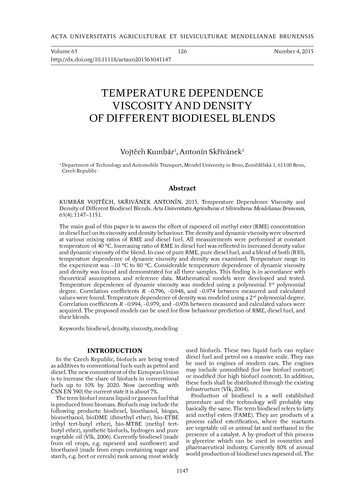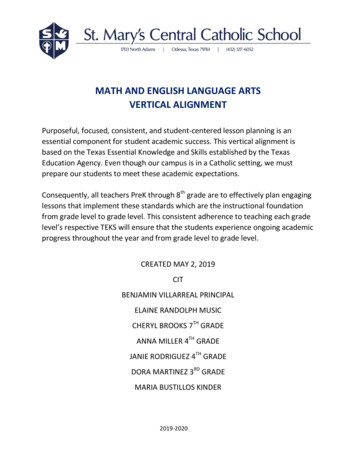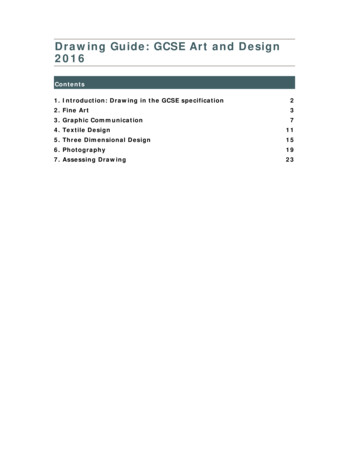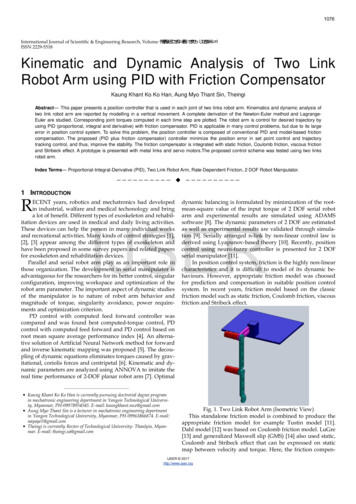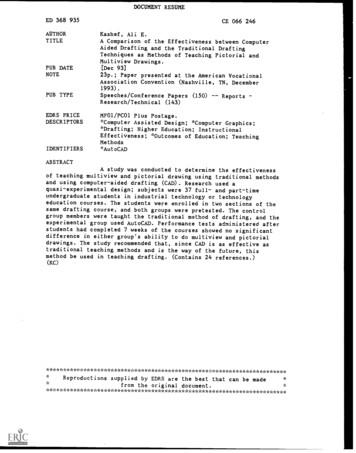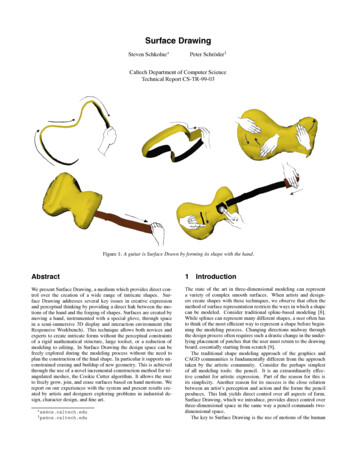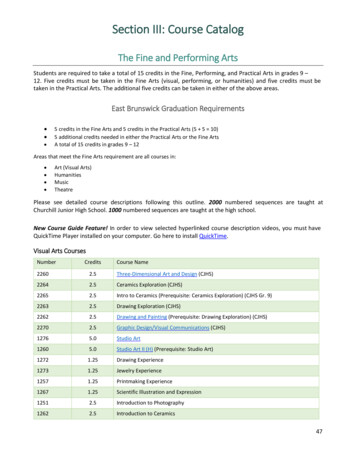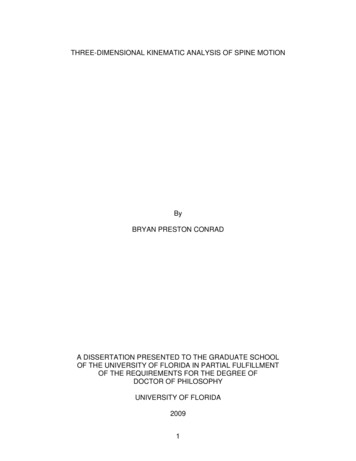
Transcription
THREE-DIMENSIONAL KINEMATIC ANALYSIS OF SPINE MOTIONByBRYAN PRESTON CONRADA DISSERTATION PRESENTED TO THE GRADUATE SCHOOLOF THE UNIVERSITY OF FLORIDA IN PARTIAL FULFILLMENTOF THE REQUIREMENTS FOR THE DEGREE OFDOCTOR OF PHILOSOPHYUNIVERSITY OF FLORIDA20091
2009 Bryan Preston Conrad2
To my girls3
ACKNOWLEDGMENTSI thank my committee for providing thoughtful feedback and insight. Dr. Horodyskihas helped to keep the project focused on the clinical goals and applications ofmeasuring spine motion and has also shared her extensive experience with statisticalanalysis. In every interaction I have had with him, Dr. Fregly has been a source ofinspiration and encouragement. I also appreciate his background in optimizationtechniques and for letting me borrow three computers and a corner of his lab to doseveral thousand registrations this past summer. Dr. Zheng has given me a great dealof advice on many aspects of kinematics, image analysis and computer programming.The many interactions I have had with him in the Biomechanics and Motion Analysis labhave gone a long way in shaping my understanding of how to apply engineeringprinciples in a medical environment. I thank Dr. Banks for giving me the opportunity towork on an interesting, significant and challenging project. His arrival at UF when I wasdesperately seeking a thesis advisor and project was serendipitous. I am incrediblygrateful that he suggested that it might be interesting to study spine kinematics; despitethe challenges (or maybe because of them), I cannot imagine working on a morerewarding project.I also appreciate the interaction and frequent feedback from my fellow graduatestudents. Bo, JD and Dr. David have done an excellent job of representing theengineering contingent in the OSMI. The development of my image registration codewas greatly assisted by the contributions of Shang, who laid the groundwork withJointTrack 2.0. I also appreciate the various insights and suggestions of Nick, Tim,Ben, and the many undergraduate students that have worked in the lab over the years.4
I also thank my high school calculus teacher, Anastasia Bilotta, who infected me with apassion for math and a zeal for solving difficult problems.I thank my family for the support and encouragement they have provided duringmy exceedingly long tenure as a graduate student. I started this journey the same yearI married Suzanne and I assured her when we got married that there was no possibilityof me ever pursuing a doctorate degree. Although this was not part of the bargain whenshe married me, she has been a constant source of encouragement and help at everystep of the process. She has displayed an incredible level of selflessness in giving methe time necessary to complete this work, I could not have completed this degreewithout her help. Along the way we have been blessed with two daughters. Adeline isvery curious about this “book” I am writing and would like me to read it to her when I amdone. Esther has taken a keen interest in my laptop and has been trying to help me by“typing” a few lines for me every time I turn my back on her.5
TABLE OF CONTENTSpageACKNOWLEDGMENTS. 4TABLE OF CONTENTS . 6LIST OF TABLES . 8LIST OF FIGURES. 9LIST OF ABBREVIATIONS. 12ABSTRACT . 13CHAPTER1INTRODUCTION . 15Clinical Motivation . 15Spine Anatomy . 16Hypothesis . 17Specific Aims . 182MEASUREMENT OF CERVICAL DISC REPLACEMENT KINEMATICS USINGMODEL TO IMAGE REGISTRATION. 19Introduction . 19Clinical Motivation . 19Purpose . 20Methods . 22Image Registration Tool . 22Experimental Setup . 23Data Analysis . 24Results. 25Discussion . 313VALIDATION OF A METHOD TO REGISTER A 3D CT VOLUME TO A SINGLEPLANE 2D FLUOROSCOPIC IMAGE USING DIGITALLY RECONSTRUCTEDRADIOGRAPHS . 34Introduction . 34Clinical Motivation . 34Medical Image Registration . 34Purpose . 35Methods . 37Digitally Reconstructed Radiographs . 376
Perspective Projection Geometry . 43Registration Algorithm . 44Image Metric. 45Mean squares . 46Normalized correlation metric . 48Normalized cross correlation. 50Gradient correlation . 51Gradient difference . 55Mutual information . 57Mutual information and gradient correlation . 59Optimizer . 61Starting Positions . 62Results. 63Discussion . 67Conclusion . 724MEASUREMENT OF SPINE KINEMATICS BY REGISTERING LATERALFLUOROSCOPY IMAGES TO DIGITALLY RECONSTRUCTEDRADIOGRAPHS . 73Introduction . 73Review of Current Methods for Measuring Spine Motion . 74Purpose . 76Methods . 77Specimen Preparation . 77Experimental Protocol . 77Imaging Protocol . 80Data Analysis . 81Software Development . 82Results. 85Discussion . 1045CONCLUSION. 108LIST OF REFERENCES . 109BIOGRAPHICAL SKETCH. 1177
LIST OF TABLESTablepage2-1RMS errors for image based measurements compared to marker basedmeasurements. 252-2Precision for image based measurements compared to marker basedmeasurements. 262-3Bias for image based measurements compared to marker basedmeasurements. 263-1Analysis of registration errors for each pose parameter. . 663-1Specimen properties. 814-1Average RMS Errors for translations. . 1024-2Average RMS Errors for rotations. 1024-3Average bias for translations. . 1024-4Average bias for rotations. 1034-5Average precision for translations. . 1034-6Average precision for rotations. . 1038
LIST OF FIGURESFigurepage2-1CAD model of the Synthes Pro-Disc C cervical arthroplasty implant. 242-2Absolute segmental rotation (in degrees) of the superior implant. 262-3Absolute segmental rotation (in degrees) of the superior implant. 272-4Rotation errors (in degrees) of the superior implant. . 282-5Absolute segmental rotation (in degrees) of the inferior implant. 292-6Absolute segmental rotation (in degrees) of the inferior implant. 302-7Rotation errors (in degrees) of the inferior implant. . 312-7Surface model projections of a cervical spine arthroplasty implant. . 322-8Surface model projections of a cervical spine arthroplasty implant. . 333-1Diagram of the work flow during the registration process. . 353-2Diagram of the radiographic projection geometry. . 393-3Diagram of the DRR projection geometry. 403-4Texture mapping. 413-5DRRs of a thoracolumbar spine specimen . 423-6DRRs of a cervical spine specimen. . 423-7Example of a fluoroscopic image of the thoracolumbar spine. . 433-8The projection geometry of the radiographic imaging equipment. . 443-9Schematic diagram of the registration process. 453-10Plots of the MS metric function versus pose. 473-11 Plots of the NC metric function versus pose. . 493-12 Plots of the NCC metric function versus pose. . 513-13 Changing the amount of image blur. 523-14An example of edge images from the fluoroscopic image. . 533-15 Plots of the NCC metric function versus pose. . 549
3-16 Plots of the GD metric function versus pose. 563-17Example of Mutual information. . 583-18 Plots of the MI metric function versus pose. . 593-19Plots of the GC MI metric function versus pose. 603-20Percentage of successful registrations. . 643-21For registrations that were successful. . 653-22Three orthogonal views of a surface model a spinal vertebrae . 684-1Definition of the motion capture reference frame. 784-2Definition of the anatomical reference frame. . 794-3Image of the fluoroscopic testing setup. . 794-4Screen capture of pyTrack software. . 834-5Diagram of the pyTrack data structure. . 844-6Segmental rotation (in degrees) of the superior vertebrae. . 864-7Segmental rotation (in degrees) of the superior vertebrae . 874-8Segmental rotation (in degrees) tracking errors of the superior vertebrae. 884-9Segmental translation (in mm) of the superior vertebrae. 894-10 Segmental translation (in mm) of the superior vertebrae. 904-11 Segmental translation tracking errors (in mm) of the superior vertebrae. . 914-12 Segmental rotation (in degrees) of the inferior vertebrae. . 924-13 Segmental rotation (in degrees) of the inferior vertebrae. . 934-14Segmental rotation tracking errors (in degrees) of the inferior vertebrae. 944-15 Segmental translation (in mm) of the inferior vertebrae. 954-16 Segmental translation (in mm) of the inferior vertebrae. 964-17 Segmental translation tracking errors (in mm) of the inferior vertebrae . 974-18 Relative joint angles (in deg) calculated from image based motion data. . 9810
4-19 Relative joint angles (in deg) calculated from marker based motion data. 994-20Relative joint translations (in mm) calculated from image based motion data. . 1004-21 Relative joint translations (in mm) calculated from marker based motion data. 1014-18 Lateral bending motion presents challenges with a lateral fluoroscopic view. . 10411
LIST OF ABBREVIATIONS3DThree DimensionalCTComputerized TomographyDRRDigitally Reconstructed RadiographMRIMagnetic Resonance ImagingPETPositron Emission TomographySPECTSingle Photon Emission Computed TomographyUSUltrasoundMSEMean Square ErrorNCCNormalized Correlation CoefficientGDGradient DifferenceGCGradient CorrelationMIMutual InformationACDFAnterior Cervical Discectomy and FusionmTREmean Target Registration Error12
Abstract of Dissertation Presented to the Graduate Schoolof the University of Florida in Partial Fulfillment of theRequirements for the Degree of Doctor of PhilosophyTHREE-DIMENSIONAL KINEMATIC ANALYSIS OF SPINE MOTIONByBryan Preston ConradDecember 2009Chair: Scott A. BanksMajor: Biomedical EngineeringMotion is an important function of the human spine and accurate measurement ofthat motion is critical to assessing spinal health and the effect of treatments. There is agreat need for tools that allow accurate 3D intervertebral spine motion to be measuredin vivo. The purpose of this study is to develop a method for registering a 2Dradiograph with a 3D CT scan for the purpose of measuring 3D motion in the spine.This goal was achieved in three phases. The first phase of this project evaluated theaccuracy of a fluoroscopic object recognition technique to measure the 3D position andorientation of a cervical disc arthroplasty implant. Although the experimentaluncertainties of the proposed technique have been extensively analyzed with respect tothe measurement of knee implant motions, the size, geometry, and type of motion ofspine implants requires that these uncertainties be determined specifically for spinecomponents. These uncertainties were determined using a cadaver model. Thesecond phase of this project developed and evaluated the static accuracy and capturerange of a novel 2D/3D image registration methodology using existing gold standarddata. Digitally reconstructed radiographs were used in the registration algorithm to takeadvantage of the internal contours and density variation of the bony anatomy. In the13
third phase of this project, the uncertainties of measuring dynamic 3D kinematics ofcervical vertebrae were determined. The tools developed in this project will allowclinicians and researchers to accurately quantify the performance of the normal spine aswell as new implants designed to restore motion to the spine. This methodology alsohas applications for other joints, such as the shoulder, ankle, knee and hip.14
CHAPTER 1INTRODUCTIONClinical Motivation“The purpose of the human musculoskeletal system is to support the body andallow motion. If we didn’t need to move, we would have roots and photosynthesize.”(1)Motion is a critical function of the body. Measuring motion is important to understandingthe function of the joints of the body. There are many disabilities that can adverselyaffect joints in the body and understanding the motion of those joints can provide anavenue to restore the proper function of the joint. Range of joint motion often is used asan indicator of the extent of disability caused by joint disease. Likewise, changes inmotion provide a valuable outcome measure to assess the effectiveness of clinicalinterventions. Although many orthopaedic therapies attempt to restore normal jointmotion, in some cases it is not clear how to measure or even evaluate “normal” jointmotion. The situation of clinically measuring spine kinematics is so muddled that notonly is there disagreement over how much motion is desirable, but there is alsocontroversy over how to define whether any motion exists at all. Some authors havesuggested that less than 2-4 deg of motion constitutes a “fusion”, while others hold thata “fusion” must be demonstrate less than 1 deg of motion. These differences are likelyattributable to the large uncertainties associated with currently available motionmeasurement tools.There are numerous challenges that must be addressed to perform accuratemeasurements of skeletal motion. Most joints must be evaluated in 3-dimension (3D)motion to fully appreciate their full function. While it can be convenient and useful tosometimes model them as such, joints generally do not behave as simple mechanical15
linkages like a hinge, ball-socket or universal joint. The most complete model of jointmotion requires that it be modeled as a 6-degree of freedom joint. It is also difficult tomeasure skeletal motion externally due to the paradoxical motion of the overlying softtissue. While these challenges are encountered when performing kinematicmeasurements for every joint in the body they are perhaps most acute when measuringspine motion.The fundamental purpose of this project is to develop, validate and utilize amethod to accurately measure spinal motion. There are three specific requirementsthat drive this research project: Intervertebral motion – it is critical to measure motion at each functional spinalunit, between adjacent vertebrae, so that dysfunction and treatments can beevaluated at the point of application. Three-dimensional – it is necessary to measure spine motion in three dimensionalspace, so that the full functional range of motion of the spine can be evaluated. in vivo – it is important to measure spine motion in a clinical setting using noninvasive methods, so that the full physiological environment (including activemuscle forces) can be tested.Spine AnatomyA brief review of spine anatomy as it relates to the purpose of this research studyis presented below, much more detailed works (such as (2)) are available with greaterdepth than is possible here. The human spine is a unique structure consisting of 24individual bones. Of these 24 bones there are seven cervical vertebrae, twelvethoracic vertebrae and five lumbar vertebrae. While the vertebrae in each region sharecommon characteristics, each bone has a unique geometry that defines the type andamount of motion is allowable at that level. In the upper cervical spine, C1 and C2 differsignificantly in structure and function from the rest of the cervical spine and are16
generally treated separately. C1, also called the atlas, articulates with the occiput of theskull and allows only flexion and extension motions. The C2 vertebra, also known asthe axis, forms a pivot which articulates with C1 to allow nearly planar axial rotation.The remainder of the cervical, thoracic and lumbar vertebrae (C3-L5), have three pointsof motion between each level, the intervertebral disc and the right and left facets. Ateach level the angle of the facet joints dictates the amount and direction of motionallowed. Oblique in the cervical spine to allow freedom for flexion-extension, lateralbending and axial rotation; nearly vertical and parallel to the frontal plane in the thoracicspine to restrict all motion except for lateral bending; and nearly vertical and orientedparallel to the sagittal plane in the lumbar spine to allow flexion-extension. Thearticulations in the spine present a complex kinematic environment where motions arecoupled. For example: as the cervical spine rotates axially, it also bends laterally.When cervical spine motion is being evaluated, it is therefore valuable to account formotions in all three dimensions. Because the individual vertebrae reside deep withinsurrounding soft tissue, there are very few external landmarks that can be used toquantify intervertebral motion, which limits the use of external sensors for measuringintervertebral spine motion.HypothesisThe purpose of this project is to quantify the 3D motions of the human spine forboth normal anatomy as well as for implanted devices. The specific hypothesis thatdrives this work is that model to image registration can be used to accurately measurethe kinematics of the spine. The conception of this project was inspired from thefollowing observations. First, single plane fluoroscopy and 2D/3D registration havebeen used for over 15 years to quantify the in vivo motions of knee arthroplasty17
components(3-12). Second, more recently, this technique has been extended so thatnot only can metallic objects be registered, but bone models can be tracked as well.Third, advances in imaging and computing allow higher resolution images to beacquired, which is critical for tracking the relatively smaller bones of the spine. Thespecific aims are designed to provide a comprehensive evaluation of the accuracy ofapplying a 2D/3D registration algorithm to measuring spine motion.Specific AimsThe specific aims of this research project were: Specific Aim 1. Determine the accuracy of a fluoroscopic object recognitiontechnique to measure the 3D position and orientation of a cervical discarthroplasty implant using existing model based registration methods. Althoughthe experimental uncertainties of the proposed technique have been extensivelyanalyzed with respect to the measurement of knee implant motions, the size,geometry, and type of motion of spine implants requires that these uncertaintiesbe determined specifically for spine components. A cadaver model was used toquantify the uncertainty of this method. Specific Aim 2. Determine the accuracy of a fluoroscopic model registrationtechnique to measure the 3D position and orientation of the vertebrae. Digitallyreconstructed radiographs were used in the registration algorithm to takeadvantage of the internal contours and density variation of the bony anatomy.This phase of the research project developed of a set of software tools that enable2D/3D registration of spinal vertebrae. The experimental uncertainties forregistering static images were determined for the image registration process.Existing static gold standard data were used for this phase of the project. Specific Aim 3. Characterize the 3D motion of vertebrae during dynamic motion.The final aim is to demonstrate an in vitro application of a 2D/3D registrationalgorithm for measuring dynamic spine motions and to evaluate the uncertaintiesof measuring vertebral kinematics using image registration. The techniquedeveloped in Specific Aim 2 was utilized in a cadaver study to measure dynamicintervertebral kinematics in the spine. The ultimate results of this project is togenerate a unique set of tools that can be used to measure 3D segmental spinemotion in vivo.18
CHAPTER 2MEASUREMENT OF CERVICAL DISC REPLACEMENT KINEMATICS USING MODELTO IMAGE REGISTRATIONIntroductionClinical MotivationAnterior cervical discectomy and fusion (ACDF) currently are the gold standard fortreating the symptoms of radiculopathy and myelopathy. Although ACDF has favorableshort-term results, recent data suggests that in the long-term, fusion adversely affectsadjacent vertebral levels. It is suspected that by eliminating motion at one level,increased stress and motion is induced at adjacent levels, which leads to degeneration.Cervical arthroplasty has been introduced as an alternative to fusion to preserve motionat operated levels. Although several clinical trials are underway to evaluate theeffectiveness of various cervical disc replacement implants, important biomechanicalparameters remain to be addressed. The combination of concern over the long-termconsequences of spinal arthrodesis and the proliferation of motion preserving spinaltechnology has created an acute need for accurate measurements of 3-dimensionalspine motion.Symptoms of cervical spondylosis include pain and motor dysfunction caused byimpingement of the nerve roots (radiculopathy) or spinal cord (myelopathy). Patientswith cervical spondylosis are typically treated conservatively at first. If the patient’ssymptoms are unresponsive to conservative treatment, surgery may be indicated, inwhich case, ACDF can be used to provide decompression to the nerves and spinalcord. Although excellent 2 year clinical results have been reported for ACDF, recentresults from longer term studies are sobering. Hillibrand has documented a cumulative2.9% per year rate of repeated operation at segments adjacent to a fusion resulting in19
approximately 26% of patients requiring an additional fusion by 10 years(13). Goffin(14)recently reported that 92% of patients with cervical interbody fusion eventually displayedsigns of adjacent segment degeneration (follow-up 60-187 months).While the mechanism responsible for adjacent level degeneration has not beenclearly defined, it is often postulated to be a result of altered biomechanics of the spinecaused by the fusion(15). Another widely held theory is that the adjacent degenerationis a continuation of the natural history of the disease process(16). However, in thestudy by Goffin et al.(14), younger trauma patients without history of pre-existingdegenerative disc disease had similar rates of adjacent degeneration to older patientswith spondylosis or disc herniation. This finding suggests that biomechanical factorsplay an important role in understanding and potentially alleviating adjacent discdegeneration.Cervical disc replacements have been designed to maintain motion in the cervicalspine while allowing decompression of nerve ro
orientation of a cervical disc arthroplasty implant. Although the experimental uncertainties of the proposed technique have been extensively analyzed with respect to the measurement of knee implant motions, the size, geometry, and type of motion of spine implants requires that these uncertainties be determined specifically for spine components.

